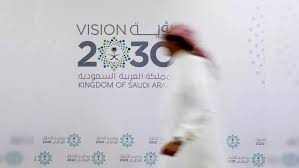Now Reading: Why Dubai Could Be the First City With Flying Car Taxis 2025!
-
01
Why Dubai Could Be the First City With Flying Car Taxis 2025!
Why Dubai Could Be the First City With Flying Car Taxis 2025!

Table of Contents
In the race to make flying cars and Vertical Take-Off and Landing (VTOL) taxis a part of daily life, one city stands out as the perfect playground for this futuristic technology—Dubai.
But what exactly makes Dubai so ideal for flying cars? Is it the city’s wealth? Its world-class infrastructure? Or its hunger for innovation? Let’s explore the many reasons why Dubai may become the world’s first city where flying cars and air taxis are a common sight in the sky.
1. A City That Loves the Future

Dubai is known around the world for embracing futuristic ideas. It is already home to driverless metro trains, robot police officers, and some of the world’s tallest and most creative buildings like the Burj Khalifa and the Museum of the Future.
Because of this, when Dubai says it will welcome flying cars and air taxis, the world listens.
In 2017, Dubai surprised the world by testing the first passenger drone, the EHang 184. The test proved the city’s strong interest in VTOL (Vertical Take-Off and Landing) technology. Since then, Dubai has partnered with companies such as Joby Aviation and Volocopter to bring the dream of air taxis closer to reality.
2. Government Support and Vision 2030

One big reason Dubai is the perfect city for flying taxis is its government.
The Dubai government, especially through the Roads and Transport Authority (RTA), has made clear plans for air taxis to be part of its smart mobility strategy. The city’s “Dubai Sky Dome” plan outlines how the airspace will be organized for personal flying vehicles, drones, and VTOL taxis. By 2030, Dubai wants 25% of all passenger trips to be self-driving—some of these in the sky!
Strong government support reduces the risks for companies who want to invest in flying taxis and encourages rapid development and testing.
3. Modern Infrastructure Designed for Innovation
Dubai’s city planning makes it easier to add flying taxis compared to older cities like London, Paris, or New York.
First, Dubai has many newly built areas designed with open space, wide roads, and modern buildings. This makes it possible to set up “vertiports” (landing and takeoff pads for VTOL aircraft) on building rooftops, shopping malls, or even on floating platforms over water.
Many planned vertiports are already being designed into existing landmarks like the Burj Al Arab and Dubai International Airport, ensuring that air taxis will be easy and convenient for both tourists and residents.
4. Favorable Weather for Flying Vehicles
While Dubai is famous for its hot weather, the city’s climate actually supports the use of VTOL taxis.
Dubai enjoys mostly clear skies, low rainfall, and stable wind conditions throughout the year. These factors are important because flying cars are sensitive to weather. Unlike cities that experience snow, fog, or heavy storms, Dubai can offer an almost all-year flying season.
This reduces delays and risks for both pilots and passengers.
5. A Hub for Technology and Tourism
Dubai is not just a home to futuristic technology; it’s also one of the world’s top travel destinations. The city welcomes more than 16 million tourists each year—and these visitors are eager to try something new and exciting.
Flying taxis and air rides over famous spots like Palm Jumeirah, Burj Khalifa, or the Dubai Marina will become not only a mode of transport but also a thrilling tourist attraction.
Tech companies know this and see Dubai as the perfect test market before offering flying cars to the rest of the world.
6. Private Investment and Global Partnerships
One more reason Dubai is so far ahead is because of strong partnerships between its government and international companies.
Big names such as Volocopter (Germany), Joby Aviation (USA), and China’s EHang have all shown interest or signed agreements to introduce their VTOL vehicles in Dubai.
These companies choose Dubai because they know the city’s laws, funding, and facilities support fast testing and public trials. In fact, Dubai could see commercial air taxi services as soon as 2026 or 2027—years ahead of other global cities.
7. A Population Ready for Innovation
Perhaps the most important factor of all is Dubai’s people. Residents of the city—both locals and expats—are used to new and advanced technologies. They were quick to adopt electric scooters, driverless trains, and even robot security patrols.
This tech-friendly attitude means that people are more likely to welcome flying taxis as part of their daily lives rather than fear or avoid them.
A recent survey by Dubai RTA showed that more than 60% of residents would be willing to try flying taxis within the first year of launch.
Challenges Remain—but Dubai Is Preparing
Of course, there are challenges to solve. Flying taxis will need strong air traffic control, new safety rules, and affordable ticket prices to be truly successful.
But Dubai is not waiting. The city is working with the General Civil Aviation Authority (GCAA) and international experts to build a complete airspace management system. This will allow hundreds of flying vehicles to safely share the sky.
Conclusion: Dubai—the City of Flying Dreams?
While other cities are still talking about air taxis, Dubai is building them.
Its combination of modern design, government support, good weather, eager investors, and forward-thinking people make it the perfect place for VTOL taxis to take flight. If you ever wanted to ride in a flying car, your best chance may come sooner in Dubai than anywhere else on Earth.
In the next five years, Dubai’s sky could be filled with the gentle hum of air taxis—making the impossible dream of flying cars finally come true.
Read More:- Portugal’s Dama Art Gallery Takes Global Lead in Art Movement Now 2025





















